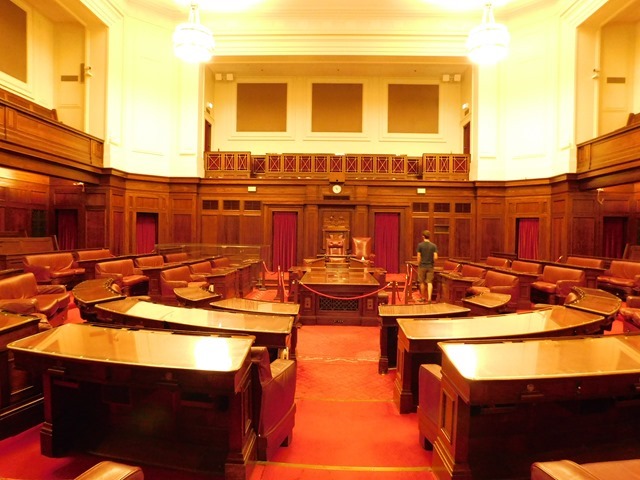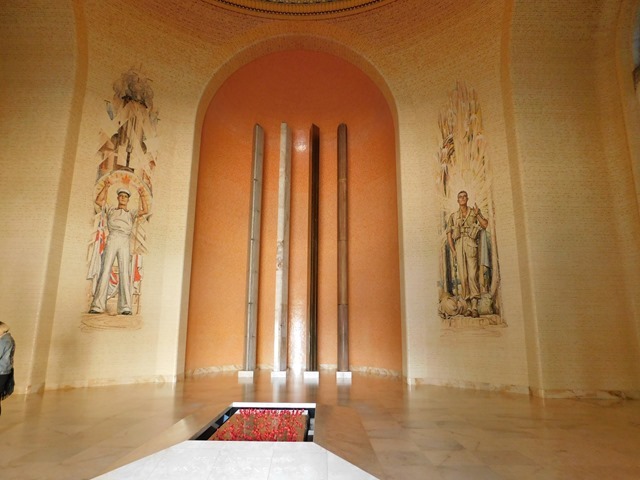 The front points directly down ANZAC Parade and to the Australian War Memorial.
The front points directly down ANZAC Parade and to the Australian War Memorial.
After the visit of Parliament House, we made a stop at the old parliament building, which now houses a museum. It had been patterned more closely to the UK Parliament.

Then we made our way to the Australian War Memorial. This is a massive complex that artfully presents both the honor and atrocities of war. We made it through WWII before we had to start bypassing exhibitions because it was getting to be too long.
 Each flower represents an Australian life lost in a war. This is only one small part of such walls.
Each flower represents an Australian life lost in a war. This is only one small part of such walls.
 A beautiful memorial to the unknown soldier, down up in the theme of old Roman-Catholic churches.
A beautiful memorial to the unknown soldier, down up in the theme of old Roman-Catholic churches.
Of course, being engineers, we were more appreciative of the technology and ingenuity developed.
 This was a jig that allowed soldiers to secretly retreat while giving the pretense they were still at their post. The candle would burn down enough to burn the string, which would release the wood block, which pull the trigger. A bit of a Rube Goldberg device.
This was a jig that allowed soldiers to secretly retreat while giving the pretense they were still at their post. The candle would burn down enough to burn the string, which would release the wood block, which pull the trigger. A bit of a Rube Goldberg device.

After all the museum visits, I was exhausted. For some reason, I really struggle in museums. Between the standing, walking, and reading so many different topics, I have a hard time enjoying them for very long. Jonathan, on the other hand, seems to have no problems and really enjoys the knowledge. We called it a night and planned to visit again the next day. After some deliberation, we really only felt like going to the Telstra Tower, though there were many other interesting sites to go visit. So, we concluded our visit with an overlook on the entire town.
 FUN FACT:
FUN FACT: The highway distance markers (mile markers in the US) are slightly different in Australia. Obviously, they are in kilometers, which are smaller than miles. So rather than put one up every kilometer, they skip a few before putting one up. Secondly, they are often marked with a two-letter abbreviation of the next town in that direction above the distance. So, for example, if you were heading towards Broken Hill and you were 8 kms out, you might see a highway distance as "BH 8".









